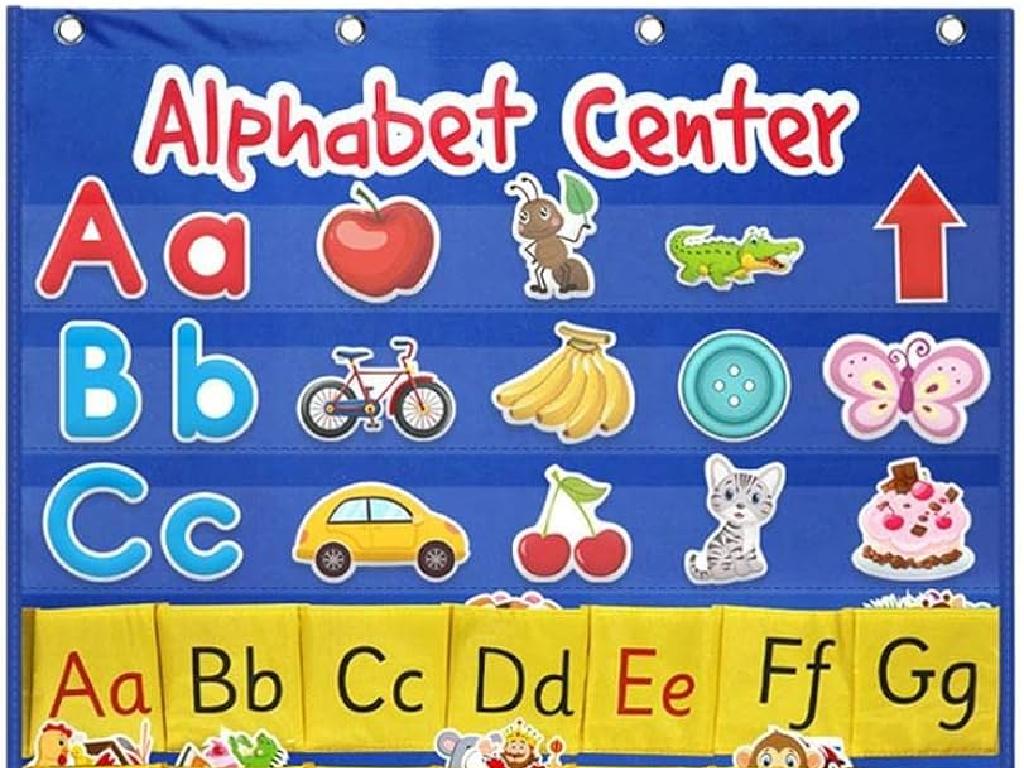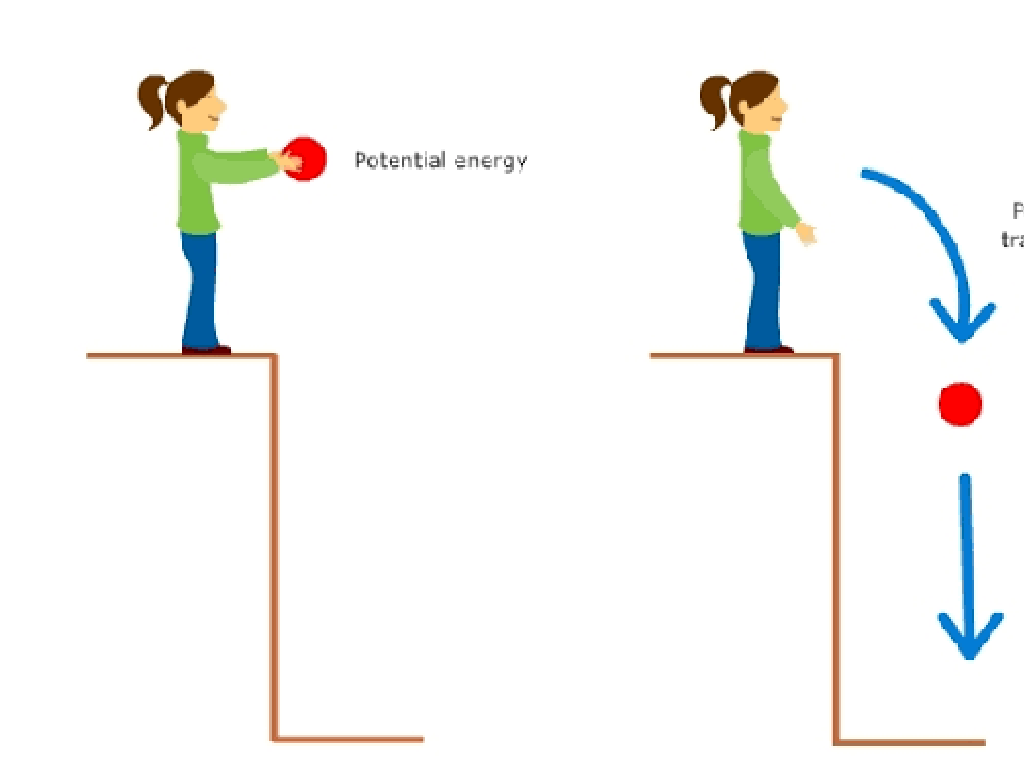Area Between Two Shapes
Subject: Math
Grade: Eighth grade
Topic: Perimeter And Area
Please LOG IN to download the presentation. Access is available to registered users only.
View More Content
Exploring the Area Between Two Shapes
– Understanding perimeter and area
– Perimeter is the boundary length; area is the space inside.
– Recap: Area of a single shape
– Area is measured in square units, like sq cm or sq m.
– Today’s focus: Area between shapes
– Learn to find the space between two nested shapes.
– Steps to calculate the in-between area
– Subtract the area of the inner shape from the outer shape.
|
Begin with a brief review of perimeter as the measure around a shape and area as the measure of space within a shape. Recap the methods for finding the area of common shapes such as squares, rectangles, and circles. Introduce the concept of finding the area between two shapes, which is particularly useful in real-world applications like framing pictures or landscaping. Explain that to find the area between two shapes, one must calculate the area of the outer shape and subtract the area of the inner shape. Provide examples with different pairs of nested shapes (e.g., a square within a square, a circle within a rectangle) to illustrate the process. Encourage students to think of practical situations where this might be applied.
Exploring the Area Between Two Shapes
– Defining ‘Area Between Shapes’
– The space contained by one shape and surrounded by another.
– Real-life examples
– Landscaping a garden, painting walls with borders, or framing a picture.
– Significance of calculation
– Helps in resource estimation, cost calculation, and efficient space utilization.
– Visualizing the concept
|
This slide introduces students to the concept of the area between two shapes, which is essentially the region that is inside one shape but outside another. Real-life applications of this concept are abundant and can be found in tasks such as landscaping, where one might need to calculate the area of grass around a circular flower bed, or in construction, determining the amount of paint needed for a wall with a door. Understanding how to calculate this area is crucial for practical problem-solving and resource management. Encourage students to visualize the concept by drawing diagrams and to think of other examples where this calculation might be necessary.
Calculating Area of Simple Shapes
– Review area formulas
– Recall formulas for squares, rectangles, triangles, and circles.
– Practice with a rectangle
– Let’s calculate the area of a 5×7 rectangle together.
– Finding area between shapes
– How to subtract one shape’s area from another to find the space between.
– Utilizing formulas interactively
|
Begin with a quick review of the area formulas for squares, rectangles, triangles, and circles to refresh students’ memory. Then, present a practice problem where students calculate the area of a rectangle, solidifying their understanding of the formula. Next, introduce the concept of finding the area between two shapes by using these formulas to calculate the area of the larger shape and subtracting the area of the smaller shape inside it. This will help students understand how to apply their knowledge to composite shapes. Encourage students to think of real-life scenarios where this might be useful, such as designing a frame around a picture or a garden layout.
Calculating Area Between Two Rectangles
– Visualize a garden with a pathway
– Imagine a garden bordered by a path. What’s the area of just the path?
– Steps to find pathway area
– Subtract the inner rectangle (garden) area from the outer rectangle (garden + path).
– Practice Problem
– Given dimensions, calculate the area of the path surrounding the garden.
– Discuss the solution
|
This slide introduces the concept of finding the area between two rectangles through the context of a garden with a surrounding pathway. Start by visualizing the problem, then guide students through the steps to calculate the area of the pathway: find the area of the outer rectangle (garden plus pathway) and subtract the area of the inner rectangle (garden). Provide a practice problem with specific dimensions for the garden and pathway, and ask students to calculate the area of the pathway. Afterward, discuss the solution as a class to ensure understanding. This exercise will help students grasp the practical application of area calculation in real-life scenarios.
Calculating Area Between Complex Shapes
– Break down complex shapes
– Divide complex shapes into basic ones for easier calculation
– Example: Circle inside a square
– Consider a square with a circle inside and find each area separately
– Calculate area of each shape
– Use formulas: Area of square (A=s^2) and circle (A=Àr^2)
– Subtract to find the area between
– Area between shapes = Area of square – Area of circle
|
This slide introduces the concept of finding the area between complex shapes by simplifying them into basic shapes. Start by explaining how to deconstruct a complex figure into familiar shapes like squares, rectangles, circles, etc. Use the example of a square with an inscribed circle to illustrate the process. Show how to calculate the area of each shape using their respective formulas, then find the area between by subtraction. Provide a practice problem for students to apply this method, such as finding the area of the shaded region between a circle and a square. Encourage students to think critically about how to approach irregular shapes and reinforce the importance of understanding the properties of basic geometric figures.
Strategies for Problem Solving: Area Between Shapes
– Identify the involved shapes
– Calculate area of larger shape
Use the appropriate formula based on the shape type.
– Subtract area of smaller shape
Ensure to use the same units for both areas.
– Practice with a new problem
Example: Find the area between a rectangle (8×3) and an inscribed triangle.
|
This slide is aimed at teaching students a systematic approach to solving problems involving the area between two shapes. Start by identifying the shapes in question, which could be standard geometric figures like rectangles, circles, or triangles. Next, calculate the area of the larger shape using the appropriate formula. Then, find the area of the smaller shape that is within the larger one, again using the correct formula. Subtract the smaller area from the larger area to find the area between the two shapes. For the practice problem, provide a scenario where students can apply these strategies, such as finding the area of a rectangular garden with a smaller flower bed inside. Encourage students to work through the problem step-by-step and discuss their methods and answers with the class.
Class Activity: Park Design Project
– Design your own park layout
– Calculate park’s total area
– Include playground, pond, walking path, etc.
– Find areas of individual sections
– Use subtraction to find areas between sections
– Present design and areas to class
|
Students will apply their knowledge of area to a real-world scenario by designing a park layout. They should include various sections like a playground, pond, and walking paths, ensuring they calculate the total area of the park as well as the individual areas of each section. They must also find the area between the sections, which will involve subtracting the areas of smaller sections from larger ones. This activity will help students understand the practical application of area in planning spaces. For the presentation, students should explain their design choices and how they calculated the areas, fostering public speaking and critical thinking skills. Possible variations of the activity could include designing parks with specific area constraints or incorporating additional features like picnic areas or sports fields.
Review and Q&A: Area Between Two Shapes
– Recap today’s key points
– Summarize how to calculate the area between two shapes.
– Open floor for student questions
– Discuss real-world applications
– Explain usage in architecture, design, and land assessment.
– Encourage curiosity and exploration
|
This slide aims to consolidate the students’ understanding of calculating the area between two shapes by reviewing the key points of today’s lesson. Encourage students to ask questions to clarify any doubts. Highlight the practical applications of this skill in real-world scenarios such as architecture, where it’s used to design spaces, or in land assessment for determining the usable area for construction. Foster a sense of curiosity by asking students to think of other fields where this knowledge might be applicable. This will help them appreciate the relevance of mathematical concepts in everyday life and various professions.
Homework: Mastering Area Calculations
– Practice calculating area between shapes
– Use the subtraction method for spaces between shapes
– Review area formulas for complex figures
– Focus on formulas for triangles, trapezoids, and circles
– Bring park designs for presentation
– Prepare questions on area topics
– Think about any difficulties you’ve encountered
|
This homework assignment is designed to reinforce the students’ understanding of calculating the area between various shapes, an essential skill in geometry. Encourage them to practice by subtracting the area of the smaller shape from the larger one. They should also review the formulas for the area of more complex shapes, as this will be crucial for their upcoming park design presentations. Remind students to bring their park designs to the next class, as they will be presenting them. Additionally, ask them to prepare any questions or challenges they have faced while learning about area calculations, so these can be addressed in the next session.






